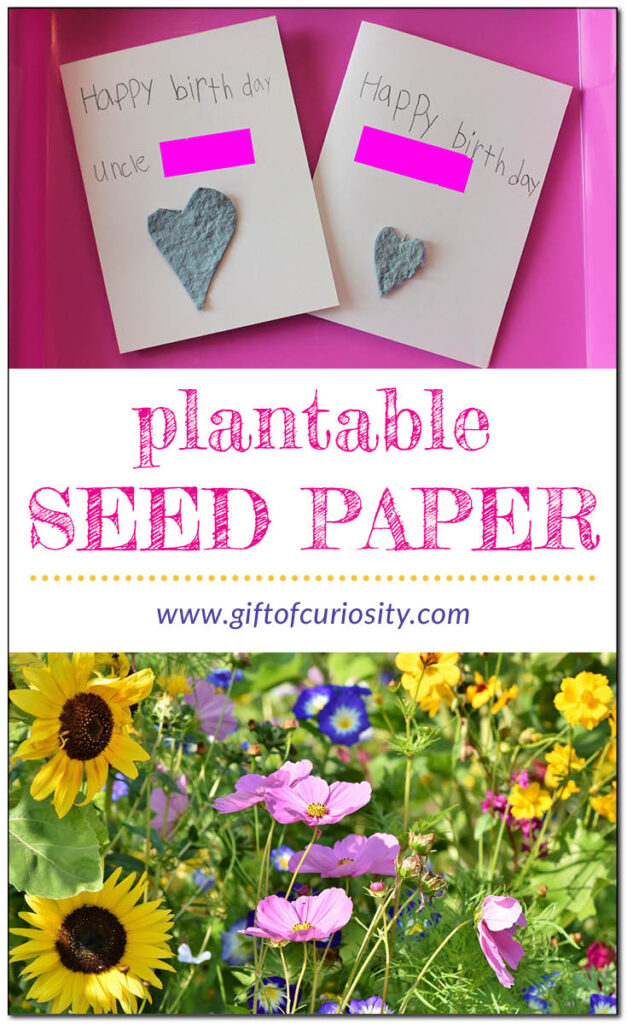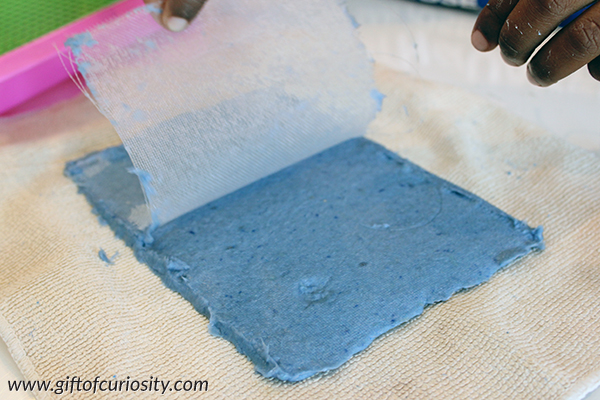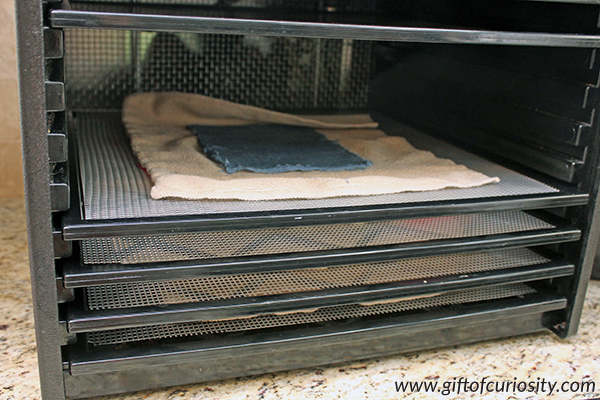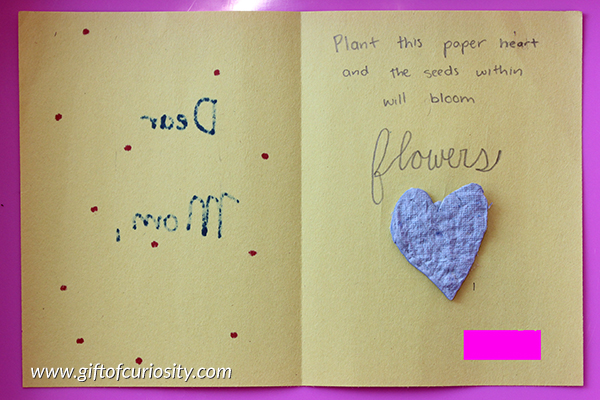This post may contain affiliate ads at no cost to you. See my disclosures for more information.
A few years ago we received an awesome Paper Recycling kit. We’ve made a few batches of paper with it, including one set of paper with beautiful nature accents.
But I’d always had it in the back of my mind that I wanted to make some plantable seed paper.
Have you heard of it?
Plantable seed paper is paper a bit thicker than typical paper, and it has seeds literally scattered throughout the fibers of paper. You can put the paper into the ground and grow plants from the seeds that are inside.
What’s so cool is that you can send a card to someone made with plantable seed paper. They can receive it in the mail and then plant it in the garden.

How to make plantable seed paper
To make plantable seed paper, we gathered the following materials:
- Wildflower seeds
- Our Vitamix blender
- Scraps of paper
- Water
- A large tray with tall sides to hold the wet paper pulp
- Green tray with large holes (from our 4M Paper Recycling kit)
- 2 fine mesh screens (from our 4M Paper Recycling kit)
- A sponge
- Several towels
- Wildflower seeds
- Our Excalibur dehydrator (optional, but speeds drying time)
On the particular day we did this project we were joined by a couple of neighbors.
We started by gathering scraps of paper from other projects. (Yay for recycling!)
We decided to stick with scraps of white and blue paper. We were afraid if we mixed too many colors together our final product would turn out brown, and none of us really wanted that. 🙂
Tip: You can use newspaper, junk mail, printer paper, construction paper, egg cartons, toilet roll cardboard, or tissue paper to make your recycled paper. But for best results, stay away from glossy papers.
The kids tore the paper scraps into small pieces and put them into our Vitamix blender.

We added enough water to completely cover the paper scraps, then blended the items to make a liquidy mixture.
Finally, we added the wildflower seeds. We stirred them into the mixture with a spoon so as not to damage them with the blades of the blender.
The best seeds for making plantable paper are small ones, especially if you plan to write on the paper. You can use flower seeds, vegetable seeds, or herb seeds as long as they are small in size.

We then proceeded to use the pulp to make our own paper.

(For complete steps on how to make your own recycled paper, see this post where I go into more detail.)

As you can tell from the photo below, recycled paper is a lot thicker than paper typically used for writing or for printing.

At this point, it’s crucial that the seed paper dries quickly. Otherwise, the seeds will start to sprout. However, it’s also important that the seeds do not get burned from too much heat.
We placed the seed paper into our low-heat dehydrator to dry them as quickly as possible. If you do not have a dehydrator, you can place them into a warm (but not hot) oven or dry them gently with a hairdryer on a low-heat setting.

Once the paper was dry, it was time to decide what to do with it!

The finished paper can be written on. In fact, both boys decided to write a note on their paper.
The girls had other plans, though. They decided to cut shapes from their seed paper and make sweet cards for their friends and relatives.


If you decide to make cards from the seed paper, remember to include a note with instructions so the recipient will know to plant the paper in the ground to sprout the seeds.

More activities that blend art and science
More science posts from Gift of Curiosity:
- Recycled paper with nature accents
- M&M science rainbow
- Jumping colors science activity
- Make your own glycerin soap
- Shrunken apple heads
- Crystallized snowflakes
- Color mixing science
Find more great science activities on my Science Activities for Kids page and my Science Activities Pinterest board.





Good morning! At what temperature do you set your dehydrator so that the seeds stay viable? I do this activity with my middle school club, and I’m still experimenting with the temperature setting. Thank you! Melanie in Orlando, FL
I would do it at the lowest setting, which is 105 on my dehydrator.
Thank you!